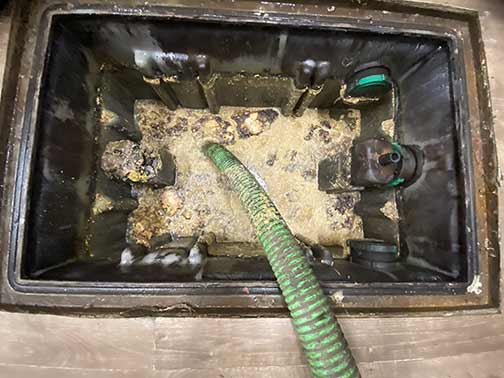
Grease traps are a critical part of your restaurant’s plumbing. They ensure that your staff can work in peace without worrying about grease clogging up the drainage system and disrupting operations, says Golden Properties Management team. A functioning grease trap helps keep your business running.
Grease traps also protect your drainage system and the city’s infrastructure. By capturing the grease inside wastewater and separating it, grease traps prevent harmful grease buildups that can cause expensive problems in sewer lines.
But to work efficiently, grease traps have to be cleaned on a schedule. Due to the huge risk that grease poses to municipal sewer lines and the environment, the EPA has very guidelines for how you should clean your grease trap.
How often should you clean your restaurant grease trap?
To answer this question, it is essential to understand how grease traps work.
How grease traps work
A grease trap is a container designed to capture the fats, oils, and grease (FOG) in wastewater. They are usually installed below the floor of the restaurant kitchen with connections to sinks, dishwashers, and floor drains.
Although actual designs may vary, all grease traps have the following parts:
- An Inlet Pipe through which wastewater flows into the grease trap
- Flow Controller to restrict the flow of liquid and keep the trap from being overwhelmed
- Baffles (Grease Retaining Walls) that extend into the water to keep FOG trapped
- Chamber (Tanks) where fats, grease & oil (FOG), and solids are separated from water
- Crossover Pipes linking each chamber to the one next to it
- Manhole Covers for accessing the grease trap to inspect, clean, and repair it.
- An Outlet Pipe through which grease-free water is released into the sewer line
How do these parts work together to protect private and public sewer systems from grease buildup?
- Wastewater entering the trap via the inlet pipe is slowed down so it can cool
- In the first chamber, FOG starts to float to the water’s surface because FOG is lighter than water
- The water enters the second chamber via the crossover pipe in the lower section of the first baffle
- Inside this larger chamber, water cools completely, allowing solids to fall to the bottom of the tank while grease congeals on the water’s surface
- The water between the congealed grease on the surface and soil debris at the bottom flows into a third chamber via a crossover pipe in the second baffle
- From this third chamber, the cleaned water is released into the sewer line
How often should you clean your grease trap?
Firstly, why is it even necessary to clean the grease trap?
Grease and solid debris constantly build up inside the grease trap. If this buildup is not removed, after a while, it can begin to interfere with the function of the grease trap. A grease trap with too much grease inside it will become ineffective.
If this happens, your grease trap will increasingly allow grease to escape into your sewer line, where it can cause serious problems. Moreover, too much grease and solid debris inside the grease trap increases the risk of leaks and other kinds of damage.
An inefficient or broken grease trap will put your restaurant in the crosshairs of the authorities. You may be forced to pay hefty fines for violations, or your restaurant could be closed temporarily. If the infractions are serious enough, you will lose your operating license.
Lastly, a malfunctioning grease trap is bad for business. It will impede the work of your staff and expose the food coming out of your kitchen to contamination. If bad odors from the grease trap enter your restaurant, you will lose customers.
To clean your grease trap, here are the established procedures:
The ¼ Rule: Generally, restaurants are required to clean their grease traps every 30-90 days or when the grease inside the receptacle makes up 25% of the volume of wastewater inside the grease trap.
Secondly, the grease trap must be cleaned by a professional. This is to ensure that the laid-down procedures for grease trap cleaning are followed. When cleaning a grease trap, proper records are required by the EPA, and grease must be disposed of according to the rules.
Thirdly, the ¼ rule for grease trap cleaning is the minimum requirement. Larger kitchens may have to clean their grease trap more frequently. If yours is an establishment with heavy frying operations, you may need to clean the grease trap every 14-30 days.
Lastly, in addition to cleaning the grease trap on the right schedule, you want to clean it at the right time. Grease trap cleaning is dirty work, and bad odors may disturb customers. Clean the grease trap outside business hours and when water will not be entering the device.
Finally, you need a reliable, professional plumber to not only clean but inspect your grease trap when cleaning it and carry out the needed repairs fast. A functioning grease trap is vital to the success of your restaurant, do not leave the task to amateurs.

